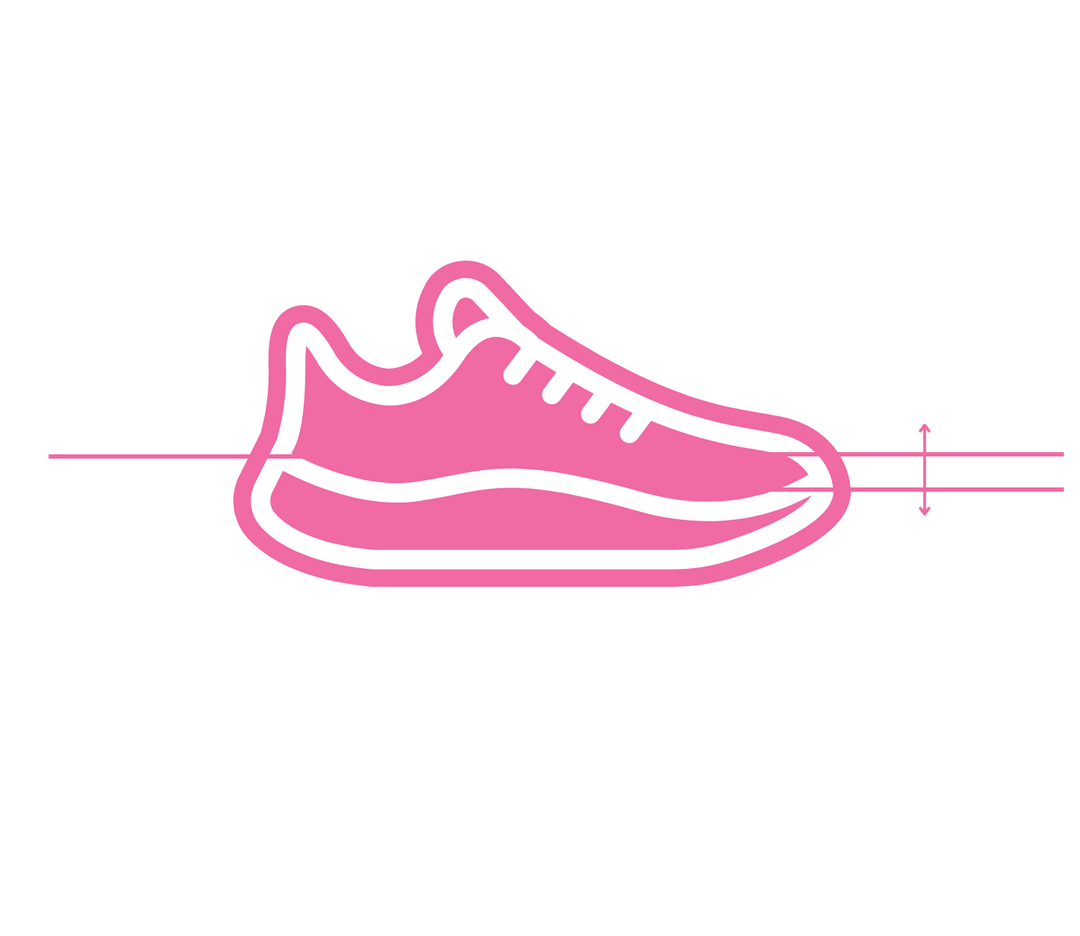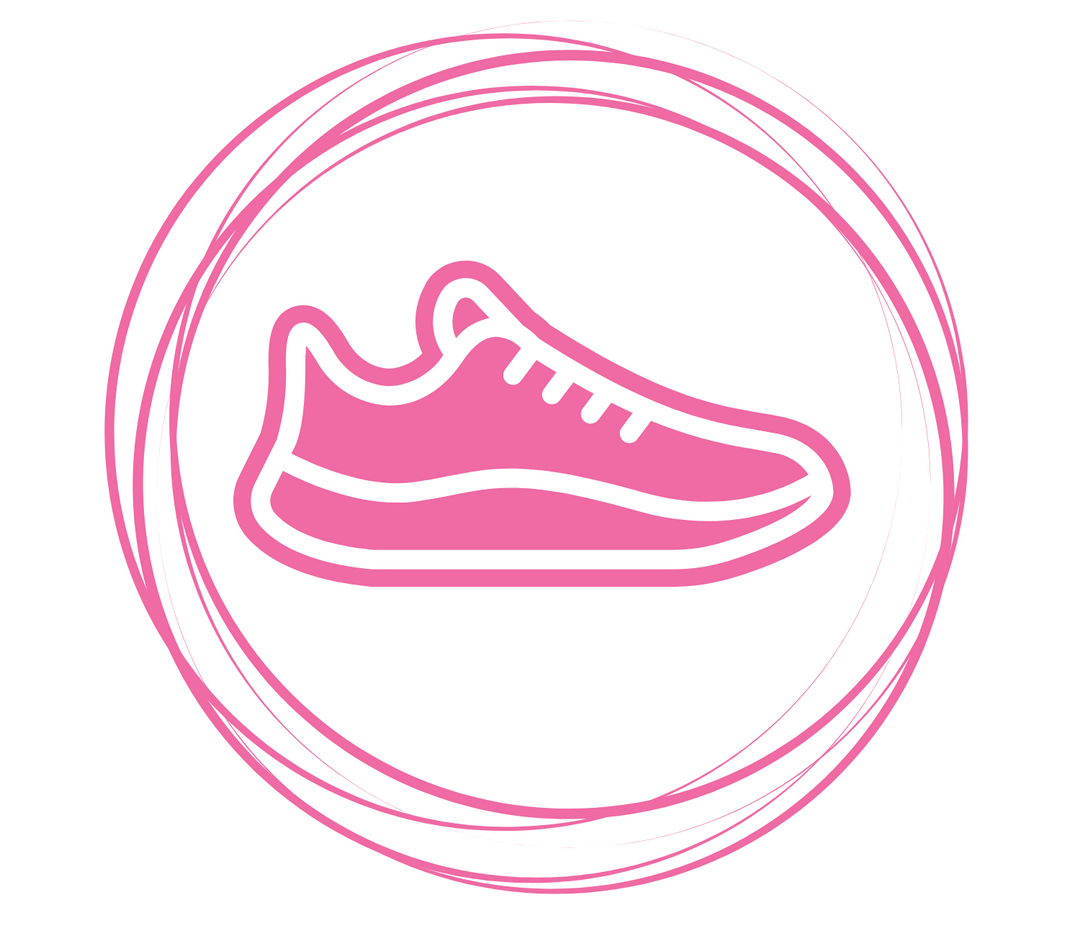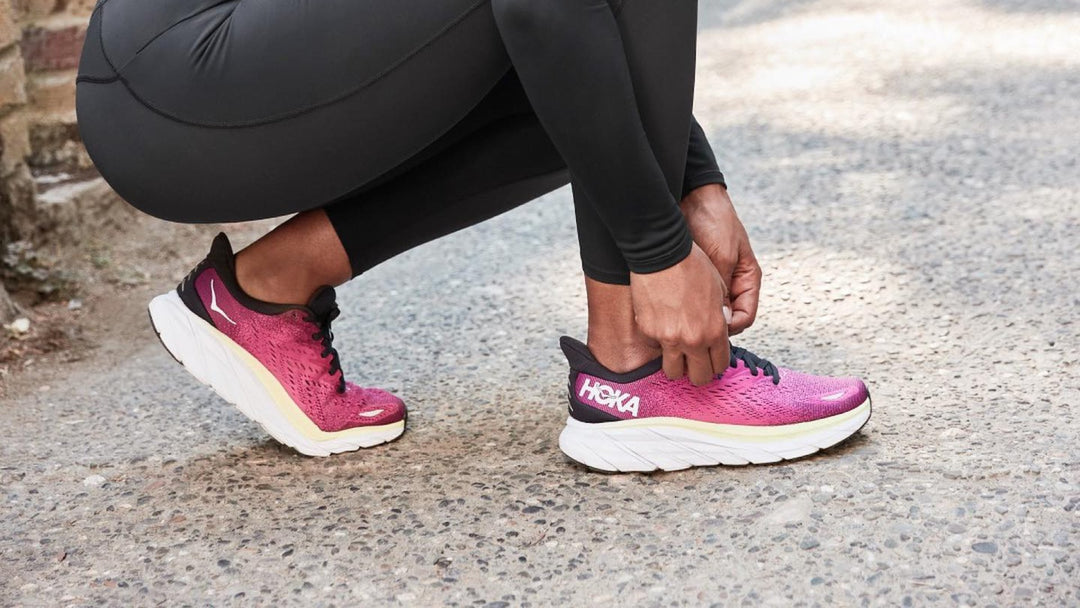
Welcome!
Sportamore's Complete Running Shoe Guide
Find the perfect fit for your feet and your goals. Our guide dives into everything you need to know about choosing the right running shoe, from understanding different shoe types (cushioned, drop, etc.) to finding the perfect fit. Whether you're a seasoned runner or just starting out, this guide will help you hit the ground running in comfort.
The first step
Choosing the right running shoe is crucial for a comfortable and injury-free running experience.
Step 1: What type of running shoe fits your needs?
Distance running shoes prioritize long-lasting comfort for high mileage runs.
Tempo running shoes provide a responsive feel to help you push the pace during workouts.
Trail running shoes are built for off-road adventures on uneven terrain like dirt paths, mountains, and loose gravel. They offer features like aggressive treads for better grip, sturdier construction for protection, and sometimes even ankle support.
The Second Step

Cushioning - What to think about
When referring to running shoes, dampening describes the ability of the shoe to absorb impact shock and reduce vibrations. Essentially, it's the shoe's cushioning system working its magic.
Here's a breakdown of dampening in running shoes:
Impact: When your foot strikes the ground while running, a significant force travels up your leg.
Cushioning: The midsole of your shoe, typically made from shock-absorbing materials like EVA foam or gels, absorbs this impact force.
Reduced Vibration: By absorbing the force, the shoe minimizes vibrations that can travel up your bones and muscles. This helps reduce stress on your joints and muscles, leading to a more comfortable run.
Not all shoes offer the same level of cushioning. Here are some things to consider:
Midsole material: Softer and thicker midsoles generally provide more cushioning.
Shoe type: Cushioned running shoes prioritize cushioning with a focus on shock absorption.
Your needs: If you experience joint pain or run on hard surfaces, a shoe with good dampening might be beneficial.

Drop - What is it?
In running shoes, drop refers to the difference in height between the heel and the forefoot of the shoe. It's typically measured in millimeters (mm).
Here's a quick breakdown:
Higher drop (usually above 6mm): Creates a more angled platform, often preferred by heel strikers for a more comfortable initial impact.
Lower drop (around or below 6mm): Promotes a more midfoot or forefoot strike, similar to barefoot running.
Choosing the right drop depends on your natural running style and preferences. It's important to consider this when selecting your running shoes!

Width - What fits me?
Running shoes come in various widths to accommodate different foot shapes. Here's the breakdown:
Regular width: This is the most common width and fits most people.
Narrow width: Ideal for runners with feet that feel too loose in standard width shoes. Signs you might need narrow shoes include extra space on the sides or your foot slipping within the shoe.
Wide width: Designed for runners with wider feet. If your feet feel pinched or compressed in standard width shoes, you likely need a wider option. Look for shoes with a wider toe box to prevent discomfort.
Many brands offer running shoes in multiple widths alongside the standard size. When selecting running shoes, consider both length and width for a comfortable and supportive fit.
The Last Step
After completing our guide and learning a bit more about what type of shoe will fit you, use one of our collections below to start scrolling through our running shoe assortment. You will easily find accessible filter options in order to find the perfect running shoe for you!







